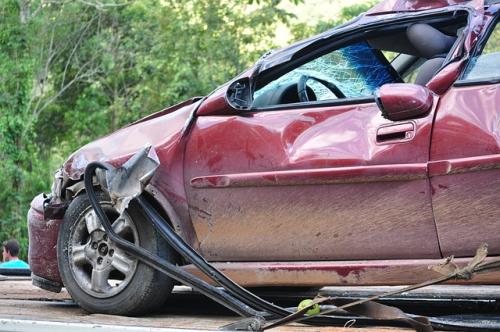Understanding Comparative Fault in Texas Car Accidents

In busy Texas cities like San Antonio, car accidents don't always have one clear cause. Maybe one driver was speeding while the other ran a red light. Or one wasn't paying attention, and the other slammed on the brakes too late. In Texas, fault isn't always all or nothing. That's where comparative fault comes in. This system helps determine who pays what and how much compensation an injured person can receive, even if they were partly to blame.
What Is Comparative Fault in Texas?
Texas follows a system called modified comparative fault, also known as proportionate responsibility. Under this rule, if you're in a car crash and partly responsible, you can still recover damages—as long as you were no more than 50% at fault. If you were 51% or more at fault, you typically can't recover anything.
For example, if a court finds you 30% responsible for a crash and your total damages are $10,000, you can still recover $7,000. But if you're found to be 55% at fault, you get nothing.
This rule applies not only in court cases but also influences how insurance companies decide settlements.
How Fault Gets Divided
When determining fault, investigators, insurance adjusters, and sometimes juries will review the facts and assign each party a percentage. That number reflects how much they believe each person's actions contributed to the crash. They consider factors such as traffic laws, speed, weather conditions, and witness statements.
Say two drivers collide at a four-way stop in a San Antonio neighborhood. One failed to yield, but the other was texting. A court might find both drivers contributed. One might be 60% at fault, the other 40%. The person who's less at fault can recover damages, reduced by their percentage. The one more at fault, if over 51%, cannot.
Why This Matters for Your Case
The 51% bar rule is a sharp line. It means that even if you were slightly more at fault than the other driver, you lose the right to compensation entirely. That's why understanding and documenting the details of a crash is so important. A few small facts can shift fault percentages enough to change the outcome of your case.
In the U.S., there are three primary models for handling shared fault in personal injury cases, like car accidents. Here's how they compare:
- Contributory Negligence: If you're even 1% at fault, you can't recover anything. A small mistake means no compensation at all.
- Pure Comparative Fault: You can recover damages no matter how much you were at fault—even 99%. Your compensation is reduced based on your share of the blame.
- Modified Comparative Fault (Used in Texas): You can recover damages only if you're 50% or less at fault. If you're 51% or more, you typically can't recover anything.
Texas's 51% rule makes it critical to understand how fault is calculated. Just a few percentage points can mean the difference between getting compensated and walking away with nothing.
Insurance and Comparative Fault
Insurance companies in areas like San Antonio or Houston, where traffic is heavy and fast-moving, often apply these same rules when deciding payouts. If they believe you were partly responsible, they'll reduce your payout. If they believe you were primarily responsible, they may deny the claim entirely.
This isn't personal—it's about numbers. They apply the same math that courts do. If they assign you 30% fault, they'll likely offer 70% of your damages. If they believe you're 51% at fault or higher, expect a denial. This is one reason why it's important to understand how fault percentages work before agreeing to a settlement.
How to Strengthen Your Side of the Fault Equation
When fault is shared, every detail matters, and small actions can strengthen your position. After a car accident, how you respond can influence how investigators, insurers, or even a jury view your share of responsibility.
If you can safely document the scene by taking photos, noting the road layout, and getting statements from witnesses when possible, you help create a clearer picture of what happened. That kind of evidence can support your claim that you acted reasonably or that the other driver played a bigger role in causing the crash.
What you say also matters. Avoid admitting fault at the scene, even casually. Stick to facts and avoid speculation. Statements like “I didn't see you” or “I was running late” may be used against you later to argue for a higher fault percentage.
Medical care matters too. Seeing a doctor right away not only protects your health but also shows that you took the accident seriously. Delays in treatment can create doubt, and doubt can shift fault against you.
Understanding your role in the accident doesn't mean giving up your rights. In many cases, people who made one small mistake can still recover damages—as long as they're not pushed over that 51% line. Clear documentation and smart decisions afterward can help prevent such issues from happening.
Bottom Line
Texas's comparative fault system means responsibility and recovery can be split. If you're hurt but only partly at fault, you may still have the right to compensation. But if you're more than 50% to blame, your options disappear. That makes it critical to document everything, act quickly, and understand how fault is determined. One or two percentage points can be the difference between full recovery, partial recovery, or none at all.
Whether your accident happened in San Antonio or anywhere in Texas, the personal injury lawyers at Ali Law Group are here to help you understand your legal options. Contact our San Antonio personal injury law firm today
Disclaimer: The information provided on this blog is for informational purposes only and does not constitute legal advice. Every situation is unique, and the law can be complex. For specific legal guidance on your personal injury case in Texas, contacting an experienced attorney is essential. The Ali Law Group is not responsible for any actions taken based on the information contained here.















